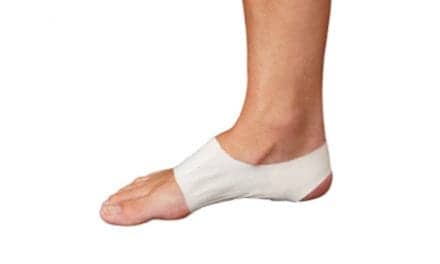Therapists leverage the protective qualities of products that promote flexibility, strength, and stabilization.
By Darwin Fogt, MPT
Elite athletes are able to push their bodies to the limit, but oftentimes, doing this again and again—sometimes performing the same repetitive stress movement thousands of times per workout—can lead to overuse injuries. Swimmers, baseball players, tennis players, lacrosse players, and any athletes who perform overhead movements are particularly prone to a shoulder overuse injury. Think of a swimmer’s freestyle stroke and how many times the arms are propelled through the water: it might take them 35 strokes to swim 50 meters, but when swimming in excess of 60,000 meters a week, just the slightest imbalance or asymmetry can create significant problems.
Typically in our clinic we tend to see acute rotator cuff strains, postoperative rotator cuff repairs, adhesive capsulitis (frozen shoulder), and, most commonly, impingement syndrome/tendinosis.
Protecting an athlete from developing any one of these conditions or injuries means working on flexibility, strengthening, and stabilization, and a vast array of products are used in this process.
Muscle imbalances tend to predispose shoulder overuse injuries, so it is important to assess range of movement before moving forward with a strength and conditioning program. Combinations of tight pectoralis major and minor and upper trapezius and levator scapula with weak lower and middle trapezii and serratus anterior will cause excessive scapular elevation and protraction. This can also cause increased thoracic kyphosis and an anterior position of the humeral head in the glenoid—all factors that will predispose the rotator cuff tendons to impingement with repetitive activity. The above combinations and patterns are very commonly seen in swimmers, largely because of the demands their sport places on their bodies, so we are well accustomed to designing programs and utilizing products that both prevent overuse injuries and help overcome them.
Treatment approaches are directed to address the impairments and dysfunctions, and a vast array of products are used in this process. We typically start with myofascial release of the tightened muscles and manipulation of the thoracic spine and/or glenohumeral joint, if necessary.
Neuromuscular education is important to reteach the body and the stabilizing musculature a new, corrected movement pattern. We use the MyoTrac EMG Biofeedback Systems, which are available from Quebec, Canada-based Thought Technology Ltd, for this. We place a surface EMG electrode on the lower and middle trapezius and then encourage the patient to activate those muscles with therapeutic exercises.
When the interscapular muscles are strong and active, they effectively stabilize the scapulae to allow the joint to move properly and create space for the rotator cuff tendons to breathe. Kinesiology tape is another form of neuromuscular re-education that we can use to either facilitate or inhibit a muscle from functioning. Albuquerque, NM-headquartered Kinesio, Campbell, Calif-based Rock Tape, and KT Tape, based in Lindon, Utah, are all commonly used brands. Taping enables the corrected position to be maintained and prevents other muscles from working and performing compensatory actions, therefore creating a more stable shoulder.
We use modalities sparingly as needed (ultrasound, infrared, iontophoresis, electrical stimulation) and will place ice on the affected shoulder at the end of each treatment.
When the athlete develops good scapulohumeral rhythm and is making progress with strength and flexibility, we will customize their treatment plans to replicate activities and demands they need to face on the athletic field.
Strengthening work is a vital part of both protecting against and working to resolve shoulder overuse injuries. Elastic therapy bands such as the Thera-Band, offered by Hygienic Corp, Akron, Ohio, or Fit-Lastic Bands from Stretchwell Inc, Warminster, Pa, are commonly used products which many athletes—especially swimmers—become all too familiar with. Sample therapy band exercises for swimmers include:
Internal/External Rotator Cuff
Resisted external rotation with therapy band performed at various angles, depending on the needs of the patient’s functioning.
Resisted internal rotation with therapy band also at differing angles.
The Swiss ball and BOSU ball, which are available from companies such as Minneapolis-based OPTP, are also both widely used—often in conjunction with the Thera-Band—to build strength and improve stabilization. Common exercises include:
Single arm push-up on BOSU ball: Starting in a neutral position with arms straight, the patient presses through the long axis of the arms and protracts the scapulae and then returns to a neutral or retracted scapular position. This exercise primarily strengthens the serratus anterior.
Swim-specific TheraBand on Swiss ball: This is an advanced exercise designed to strengthen and protect the shoulder during the catch phase of the freestyle stroke. The patient abducts the shoulder with the hand overhead and performs resisted shoulder internal rotation using resistance bands or cords. It’s crucial that the patient maintains the scapula in a depressed and retracted position for stabilization in order for the glenohumeral joint to move effectively, efficiently, and safely.
Darwin Fogt, MPT, owner of Evolution Physical Therapy and Fitness, is a California Licensed Physical Therapist with a BS in exercise physiology from the University of Southern California and a master’s degree in physical therapy from California State University, Long Beach. For more information, contact [email protected].





